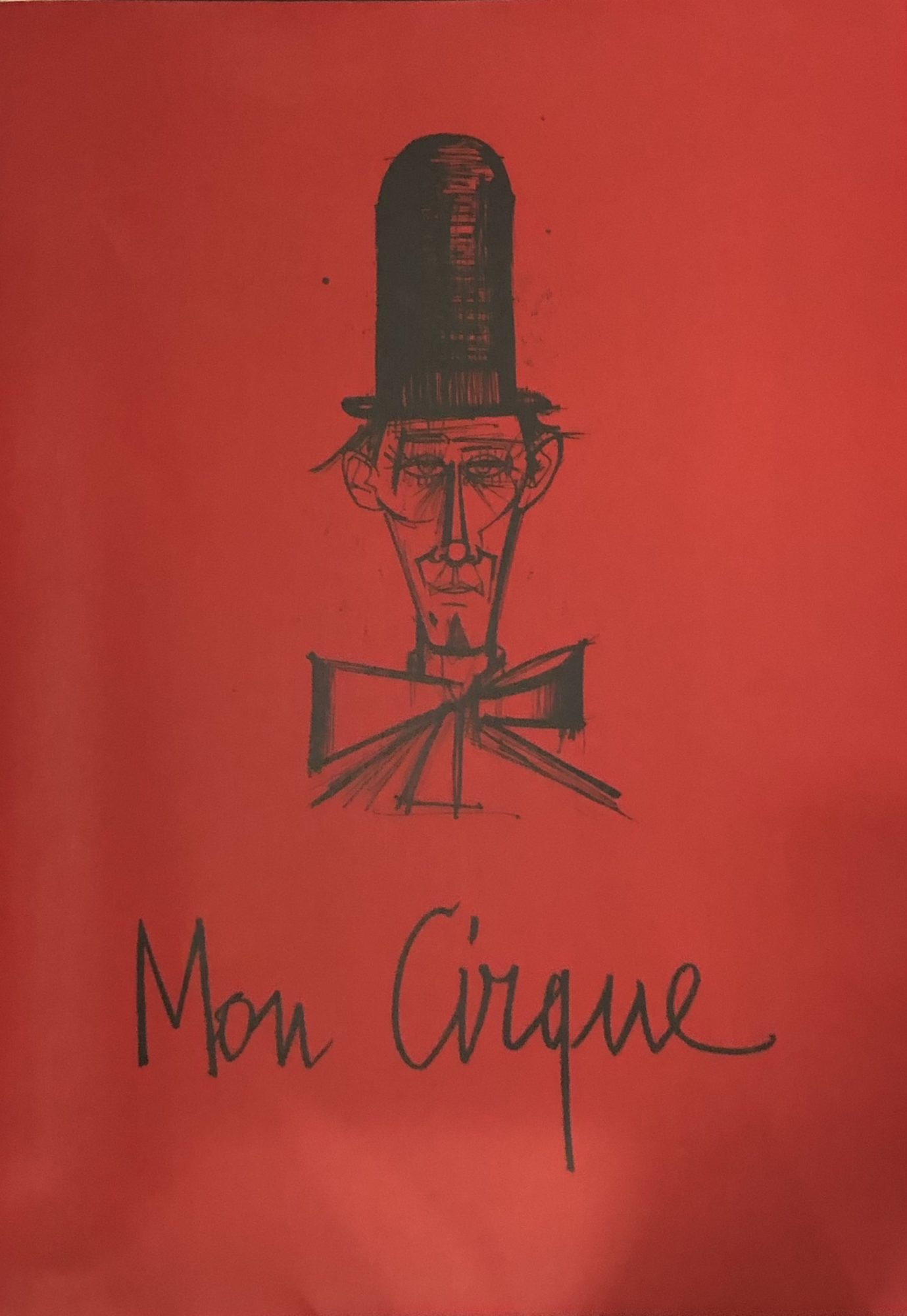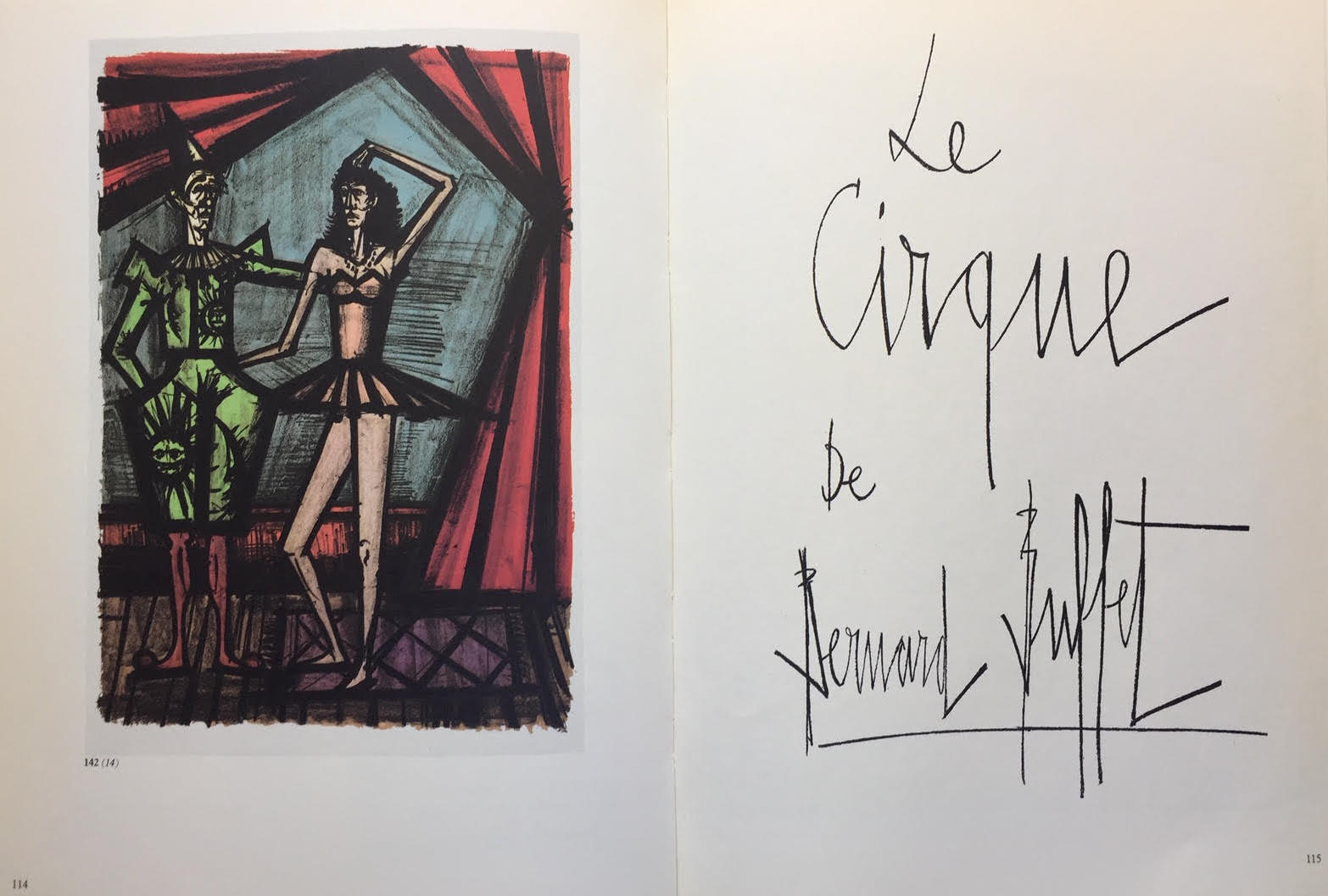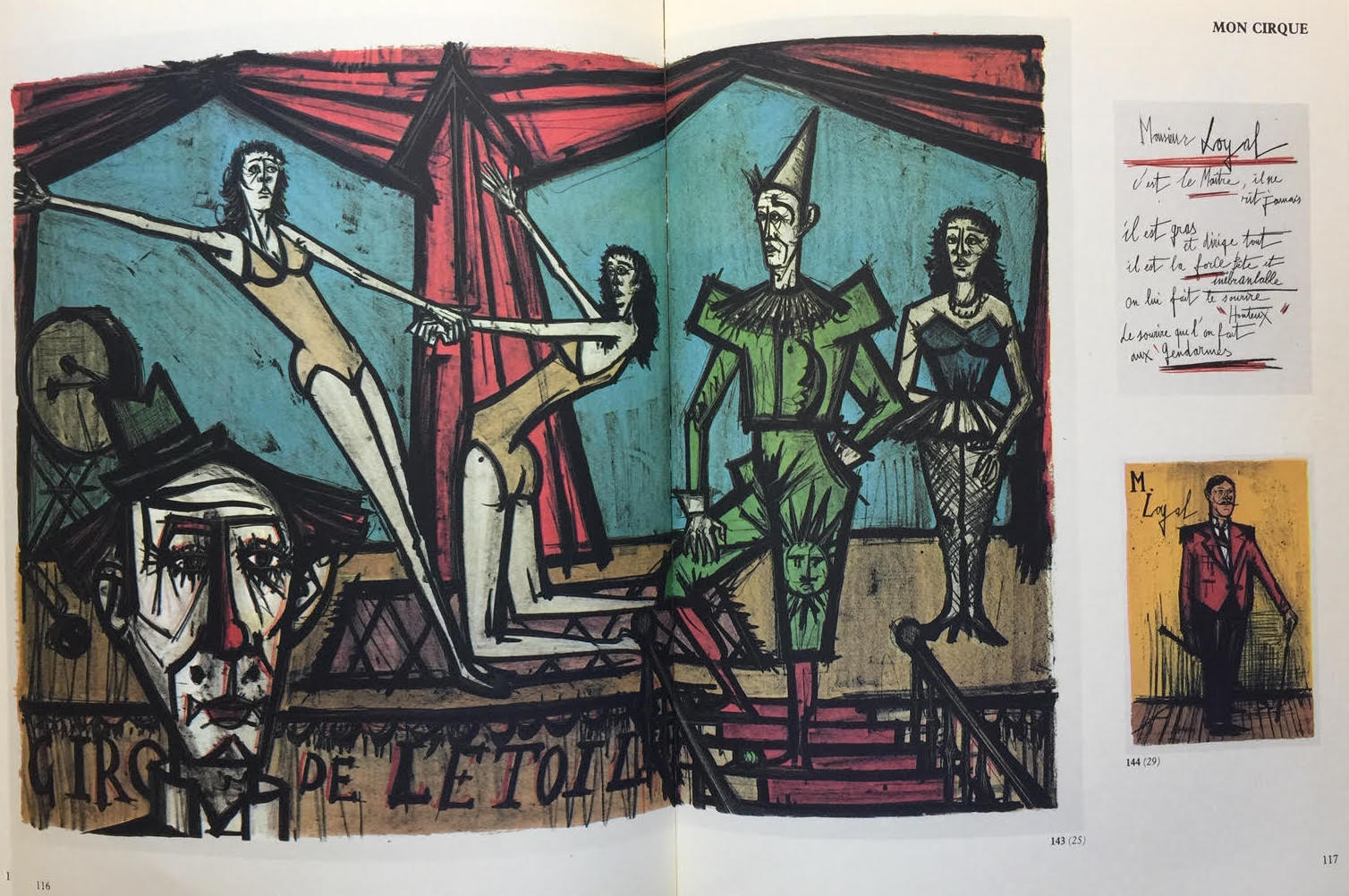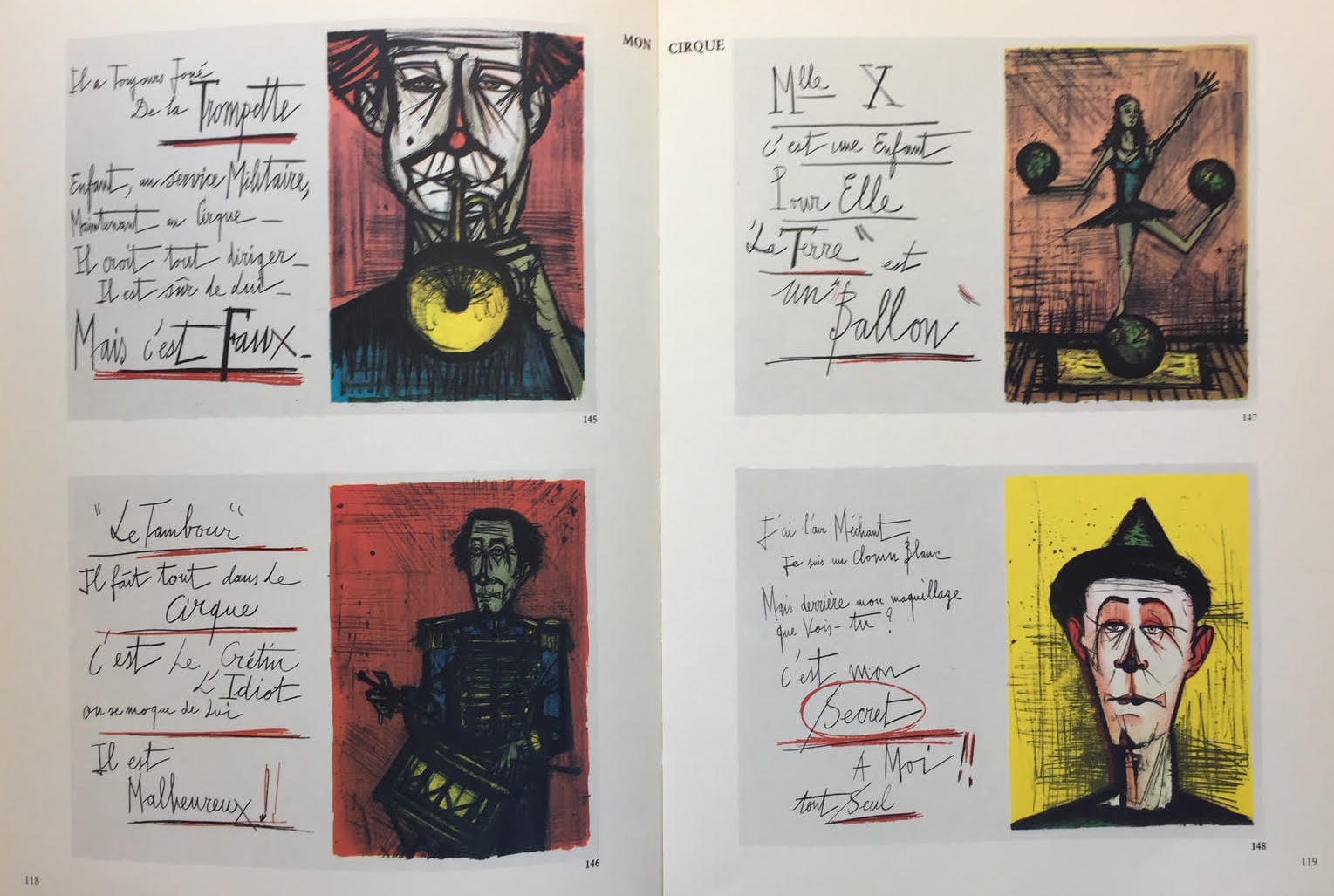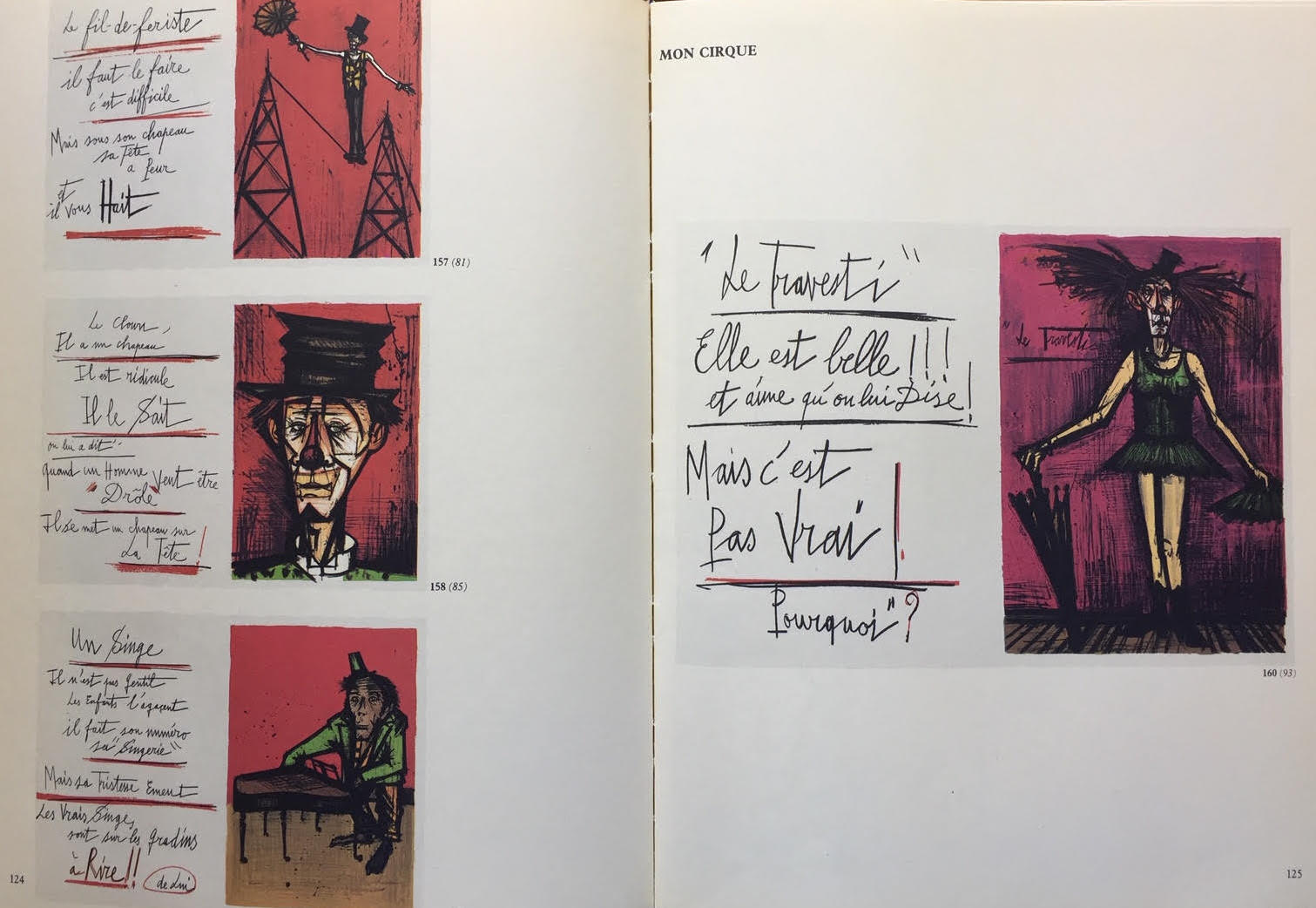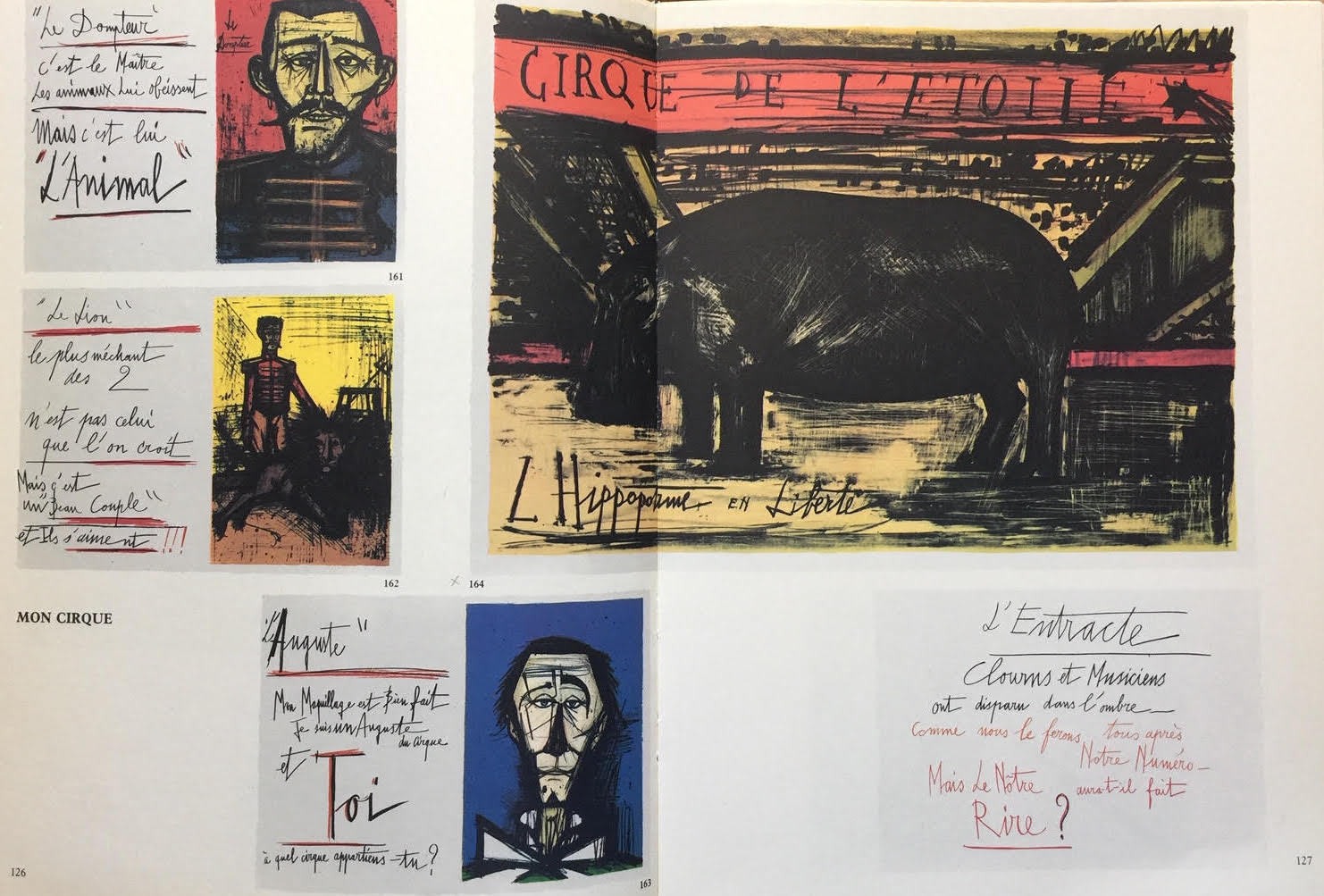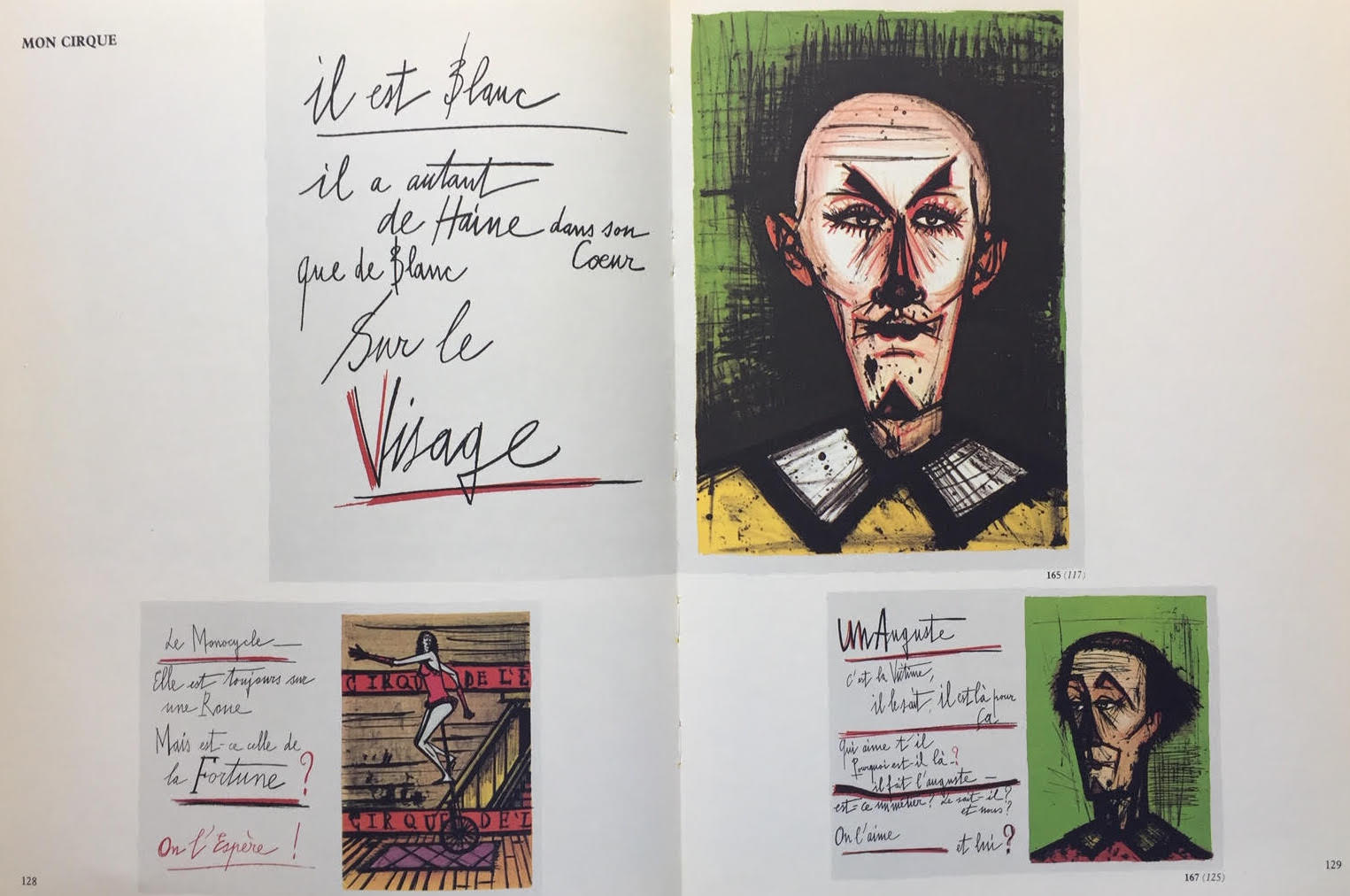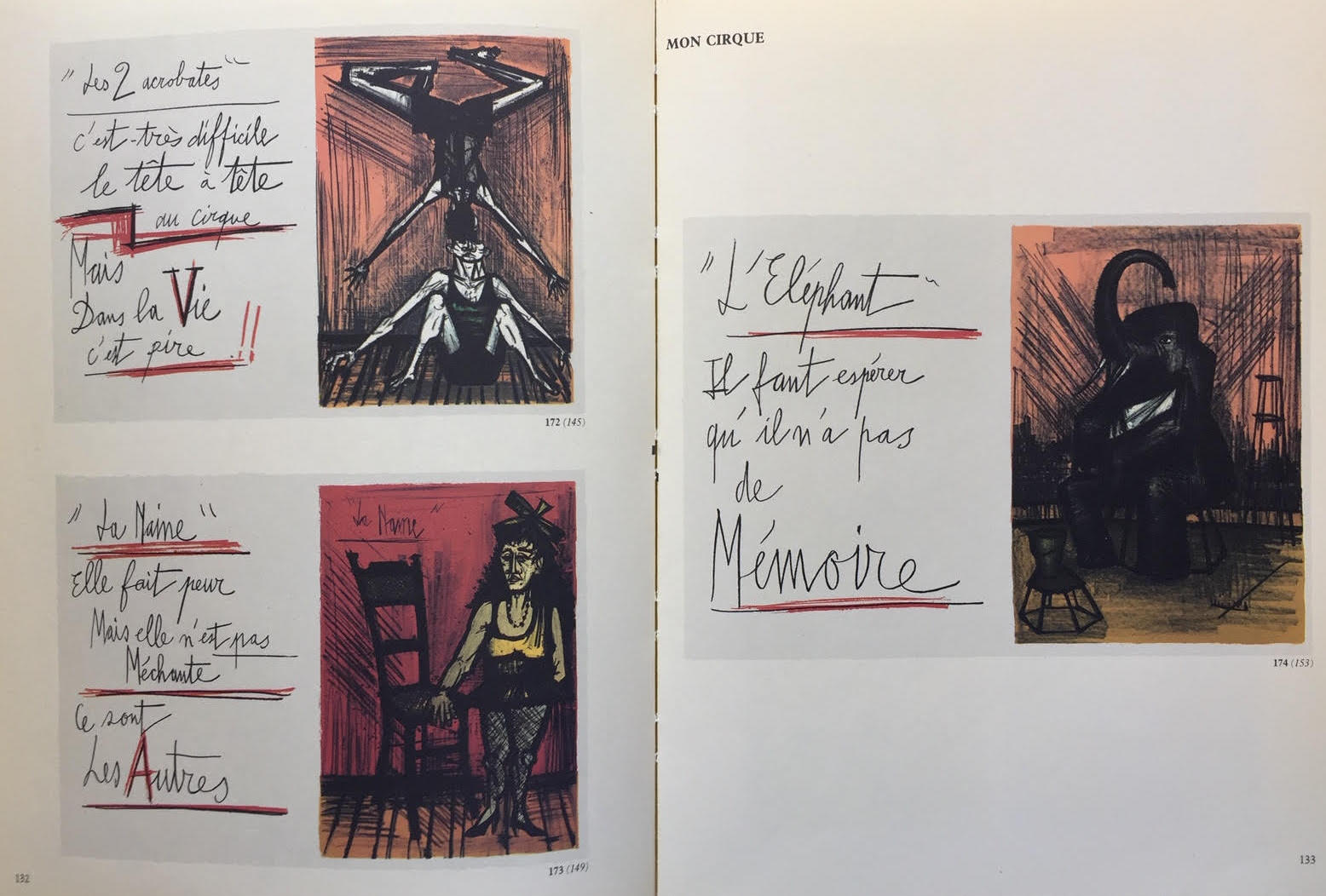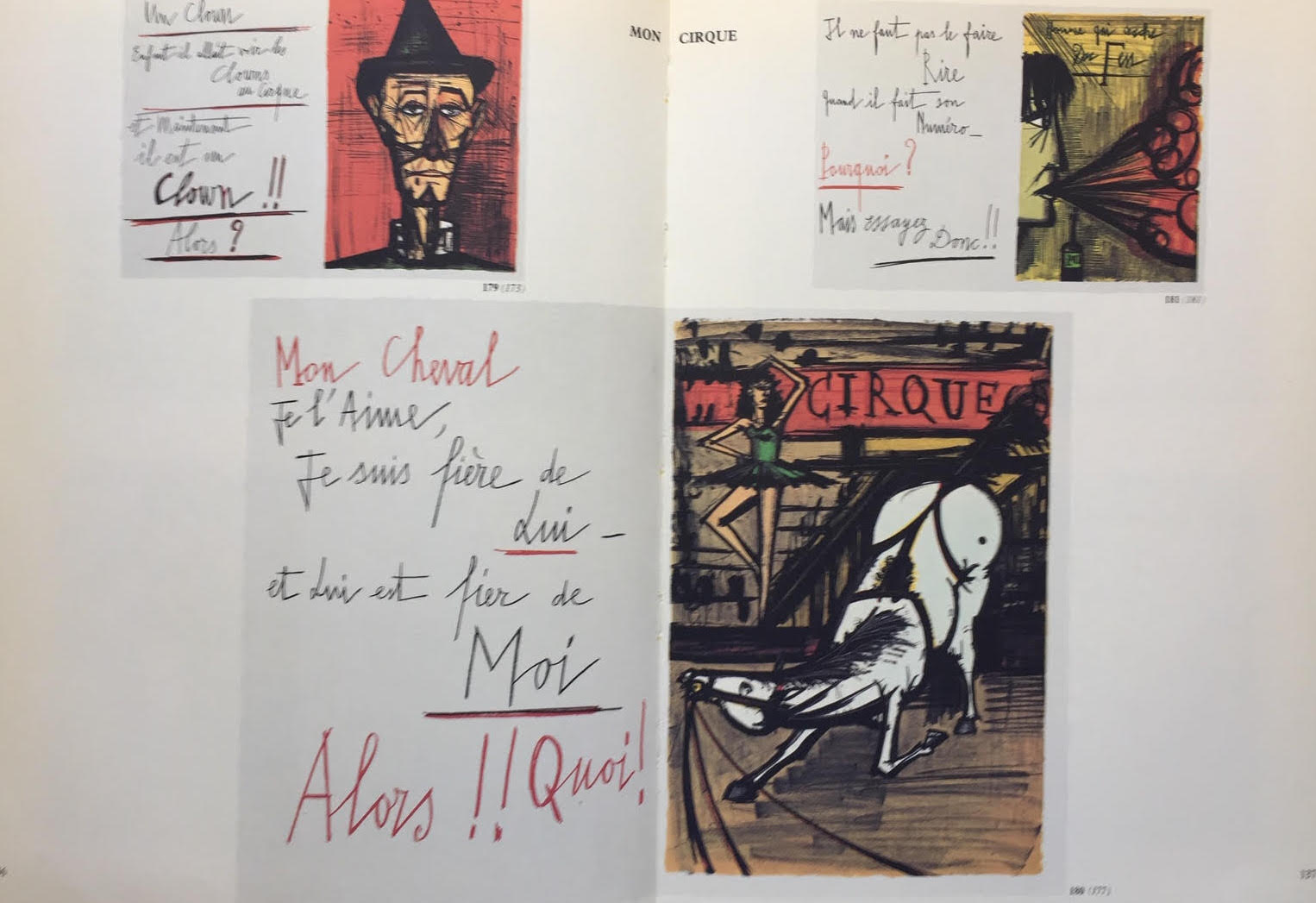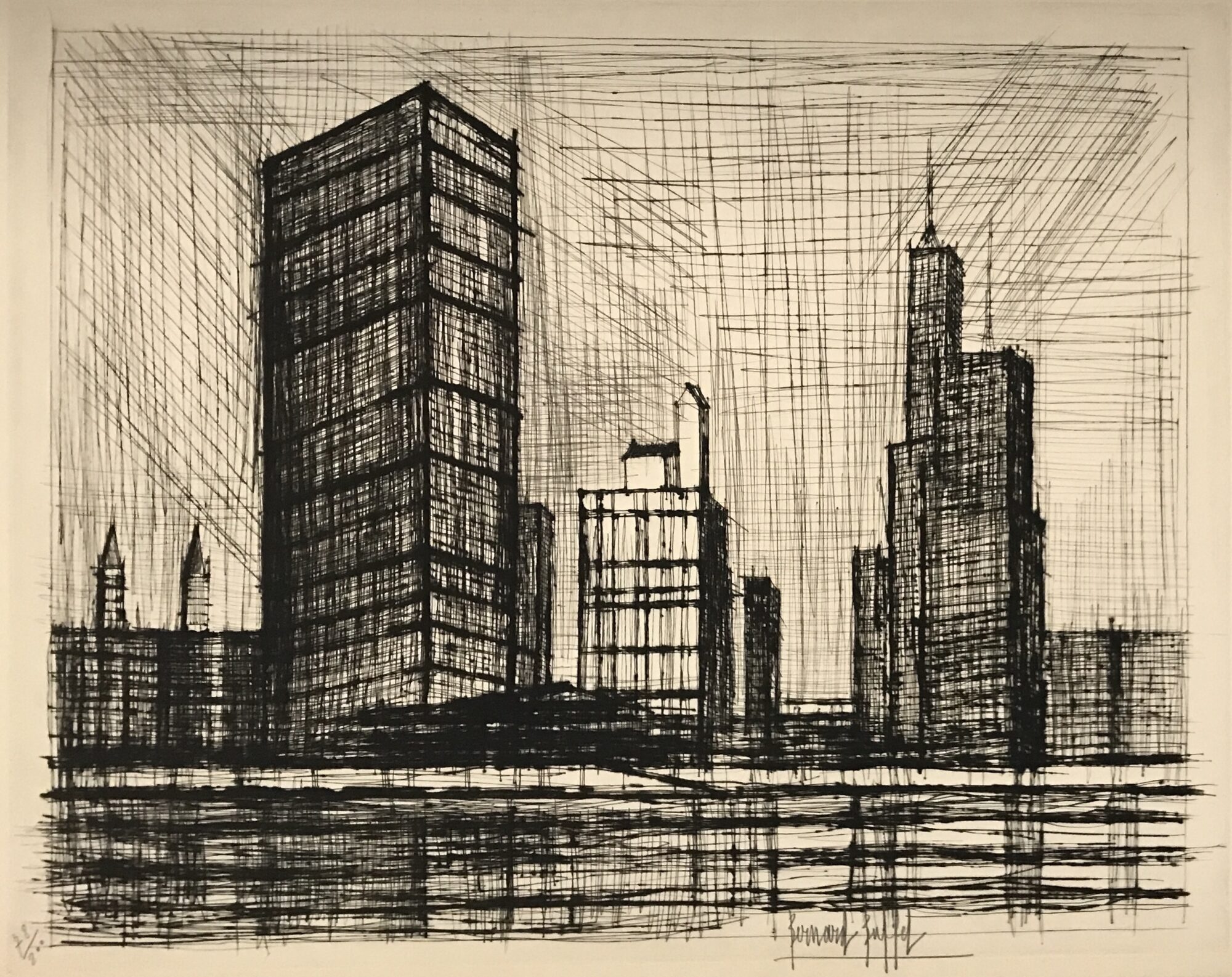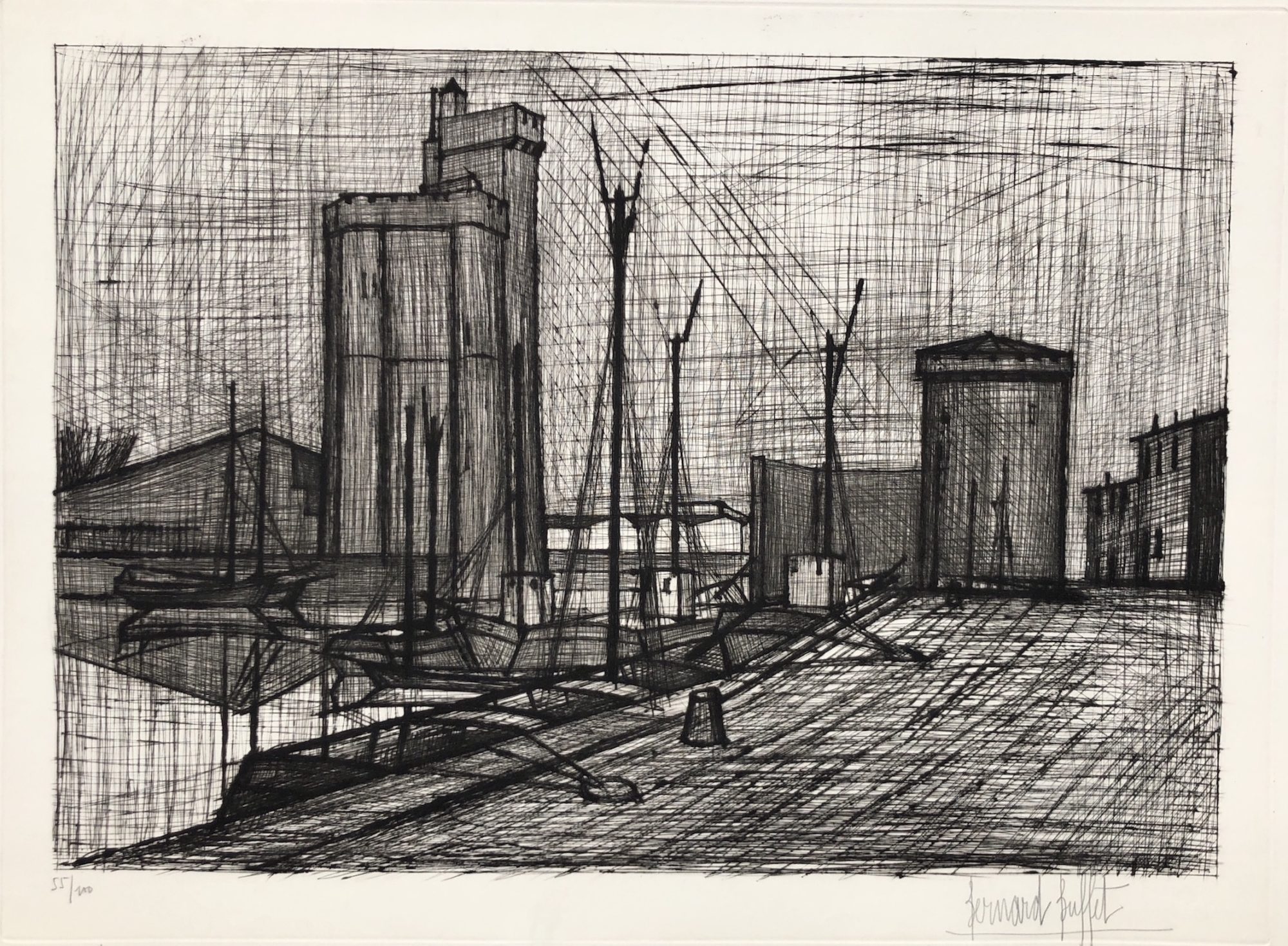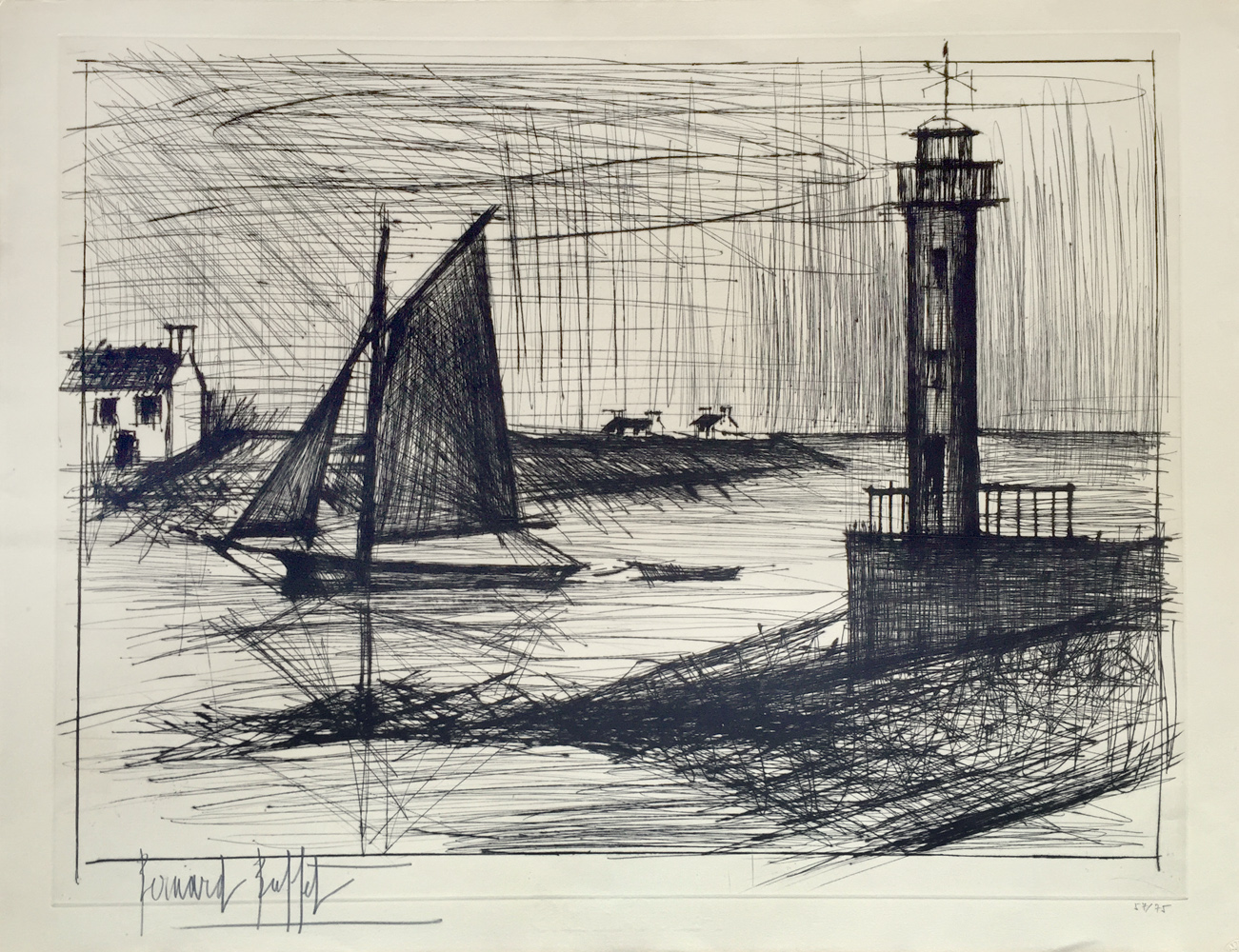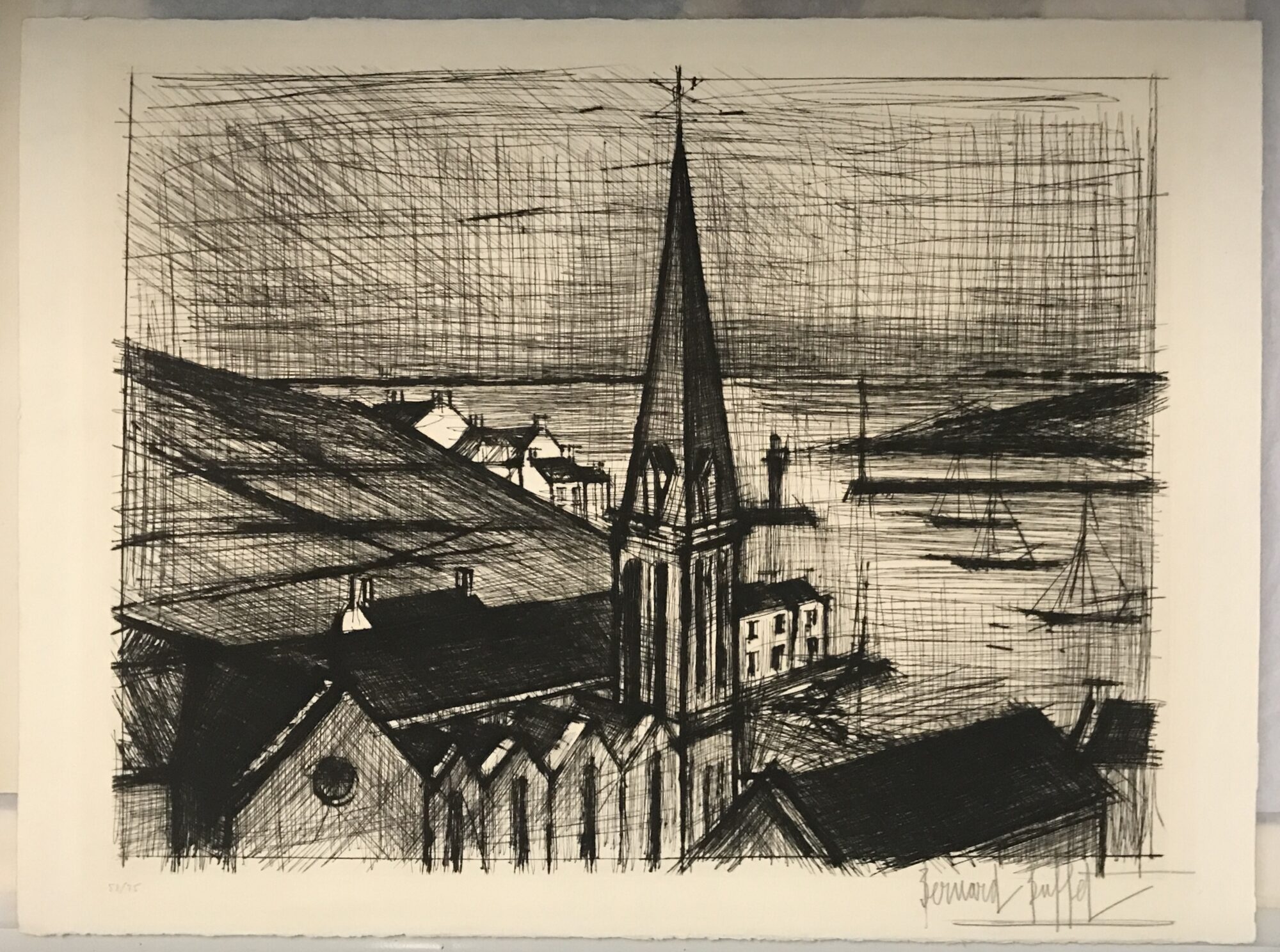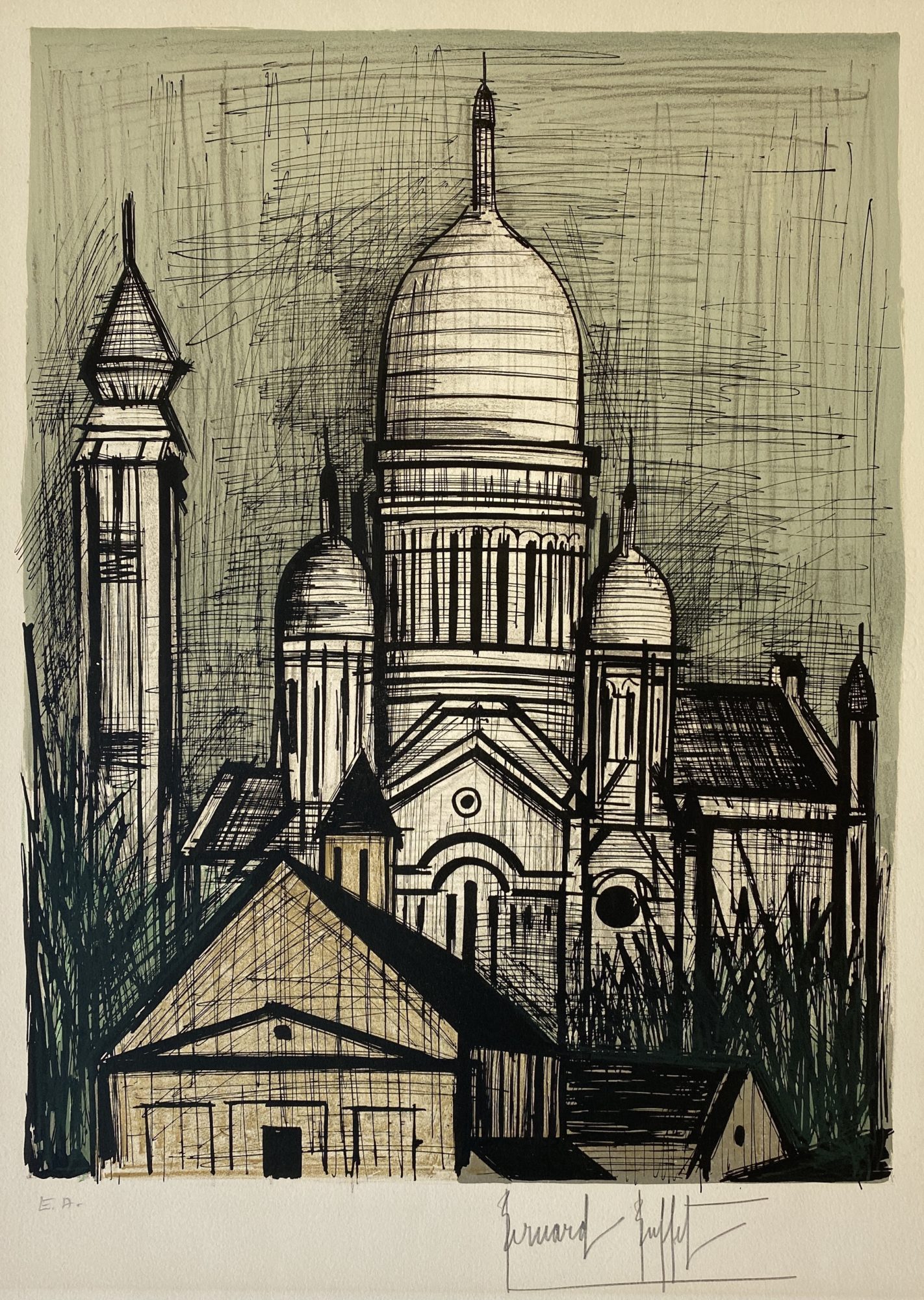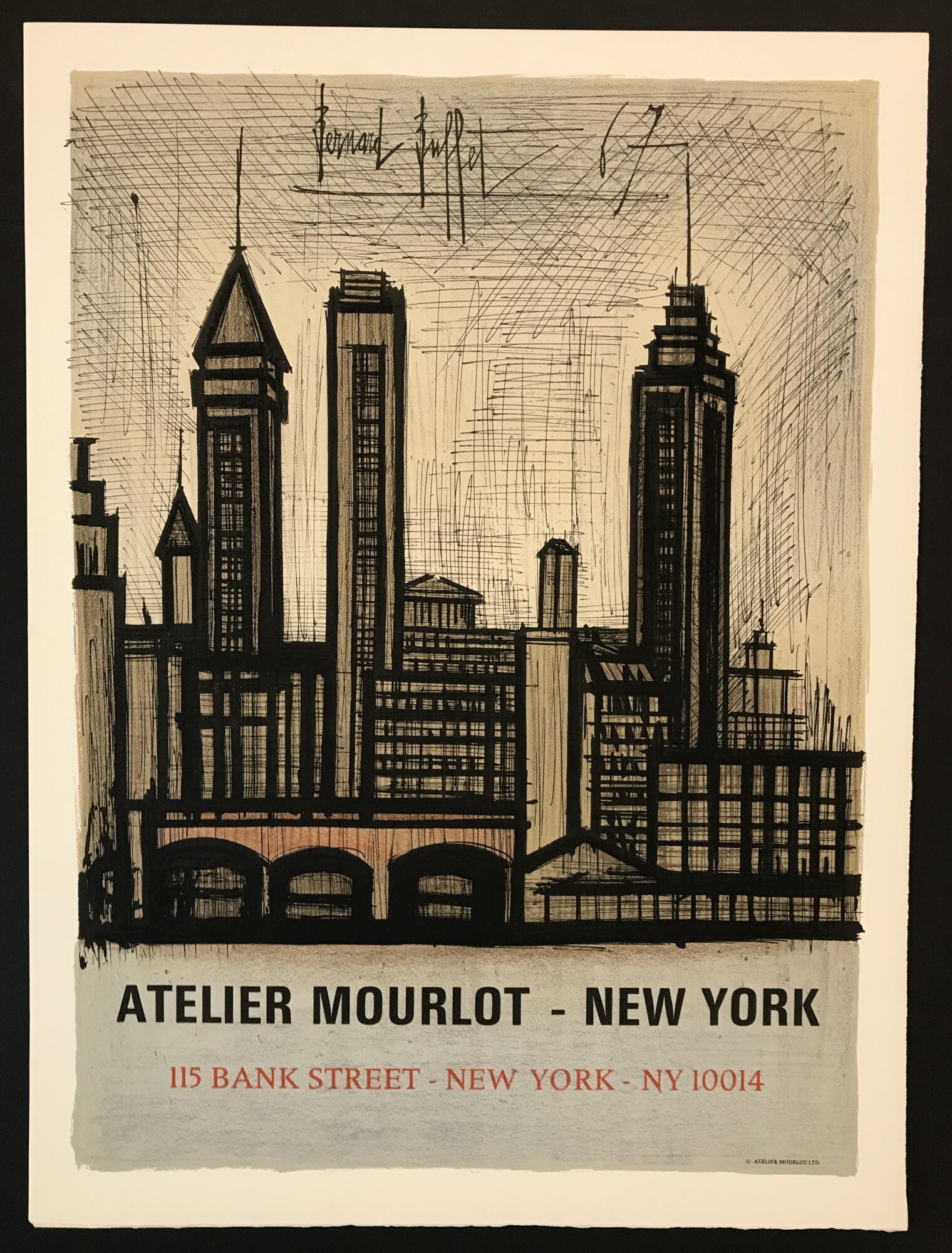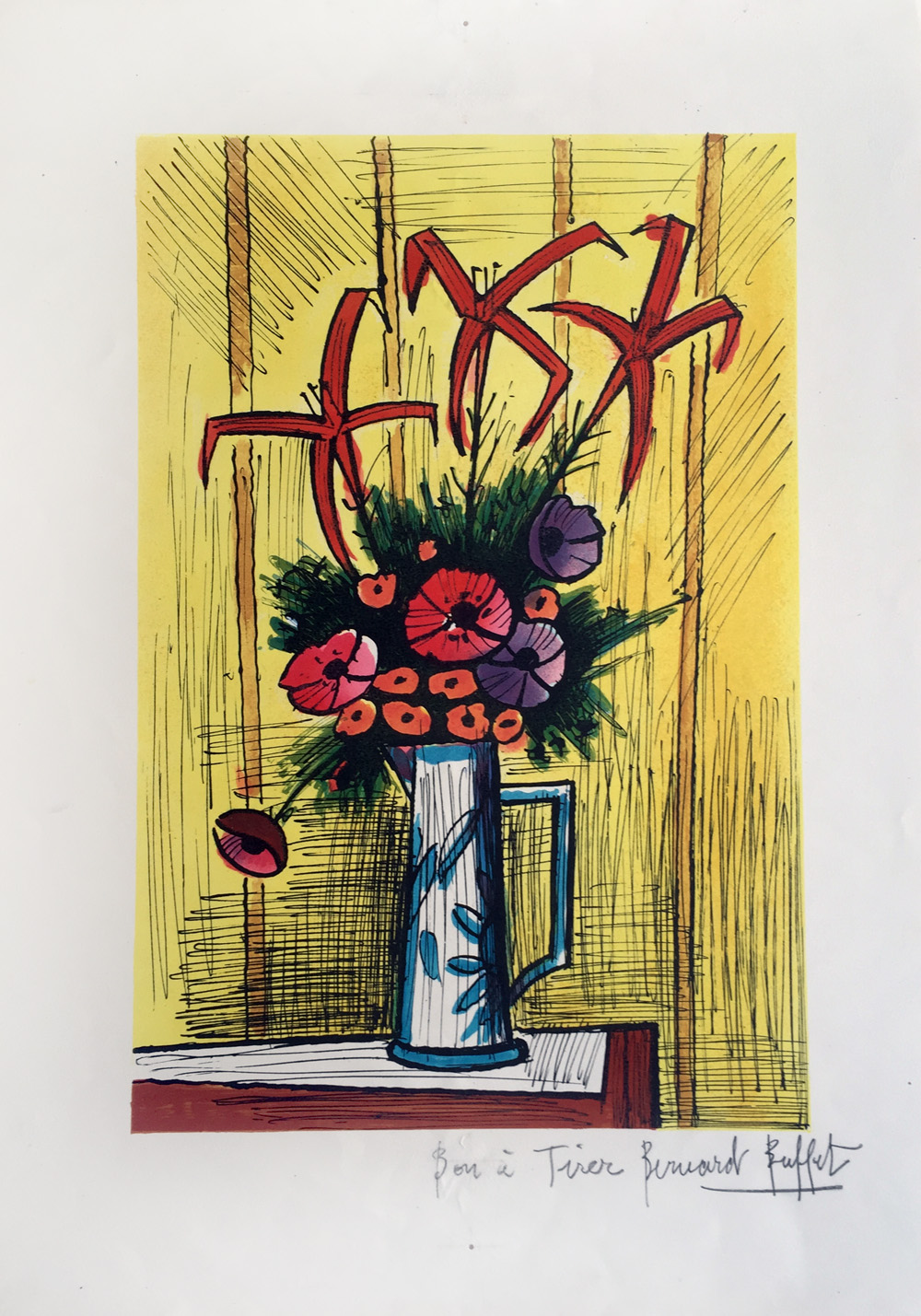Bernard Buffet – Mon Cirque (44 Lithographs with Book)
Bernard Buffet, Mon Cirque is a Portfolio of 44 Signed and Numbered Lithographs from Buffet’s Clown/Circus series with the original book produced in 1968. Each Lithograph is signed and numbered from the edition of 120. There are also 44 unsigned Lithographs included in the book.
Buffet’s oeuvre is graphic; with his most iconic renderings being of tall and elongated, sorrowful clowns. The zenith of the “Clown” series was during the 1950s. Formulated at a time when society was just recovering from the Second World War, the subject proved to be extremely powerful. The masked characters were estranged and enigmatic, capturing the unease and distress of the French people during the post-war period. Buffet adopts a classic composition for portraits and the artist seems to purposefully leave the character’s disposition a mystery. His clowns don a comical appearance, and yet their eyes look equivocal and empty.
When asked why the character would be favoured as a repeated focus of his paintings, Buffet answered, “The clown can indulge himself with all sorts of disguises and caricatures.” The depiction of the clown was a way for the artist to embrace and express freedom, and the canvas allowed him space to breathe within the harshness of reality. To put on mask after mask was to cope with the dreariness of social existence. In Nicholas Foulkes’ new biography, Bernard Buffet: The Invention of the Modern Mega-Artist, the art historian notes: “It is often said that when Buffet painted a face, whether human of animal, he was painting a self-portrait. While not entirely true, there is no doubt that he used his own features as the basis for some of his clown paintings.”
In the late 1960s, as the media and the public disapproved of the artist’s extravagant lifestyle and what was perceived to be an excessively commercial oeuvre, Buffet’s celebrity status turned sour. Bitterly chastised, it makes sense that the artist should exert darkness on to his paintings. Is the clown, dressed in a costume representative of 19th-century French court dress, standing tall and majestic, or does he dejectedly mourn the glory of days gone by? The jester faces the masses in isolation, emanating an air of gloom. More prominent, however, is the artist’s unapologetic resilience to a sense of self that is reflected in his observations and artistic portrayal of life as a melodrama.
| Title | Mon Cirque |
|---|---|
| Medium | Lithograph |
| Year | 1968 |
| Edition | 120 |
| Signature | Signed, numbered |
| Size | 28.25 x 20 (in) 72 x 51 (cm) |
| Price | SOLD |
Description
Bernard Buffet, Mon Cirque is a Portfolio of 44 Signed and Numbered Lithographs from Buffet’s Clown/Circus series with the original book produced in 1968. Each Lithograph is signed and numbered from the edition of 120. There are also 44 unsigned Lithographs included in the book.
Buffet’s oeuvre is graphic; with his most iconic renderings being of tall and elongated, sorrowful clowns. The zenith of the “Clown” series was during the 1950s. Formulated at a time when society was just recovering from the Second World War, the subject proved to be extremely powerful. The masked characters were estranged and enigmatic, capturing the unease and distress of the French people during the post-war period. Buffet adopts a classic composition for portraits and the artist seems to purposefully leave the character’s disposition a mystery. His clowns don a comical appearance, and yet their eyes look equivocal and empty.
When asked why the character would be favoured as a repeated focus of his paintings, Buffet answered, “The clown can indulge himself with all sorts of disguises and caricatures.” The depiction of the clown was a way for the artist to embrace and express freedom, and the canvas allowed him space to breathe within the harshness of reality. To put on mask after mask was to cope with the dreariness of social existence. In Nicholas Foulkes’ new biography, Bernard Buffet: The Invention of the Modern Mega-Artist, the art historian notes: “It is often said that when Buffet painted a face, whether human of animal, he was painting a self-portrait. While not entirely true, there is no doubt that he used his own features as the basis for some of his clown paintings.”
In the late 1960s, as the media and the public disapproved of the artist’s extravagant lifestyle and what was perceived to be an excessively commercial oeuvre, Buffet’s celebrity status turned sour. Bitterly chastised, it makes sense that the artist should exert darkness on to his paintings. Is the clown, dressed in a costume representative of 19th-century French court dress, standing tall and majestic, or does he dejectedly mourn the glory of days gone by? The jester faces the masses in isolation, emanating an air of gloom. More prominent, however, is the artist’s unapologetic resilience to a sense of self that is reflected in his observations and artistic portrayal of life as a melodrama.
Additional information
| Title | Mon Cirque |
|---|---|
| Medium | Lithograph |
| Year | 1968 |
| Edition | 120 |
| Signature | Signed, numbered |
| Size | 28.25 x 20 (in) 72 x 51 (cm) |
| Price | SOLD |


